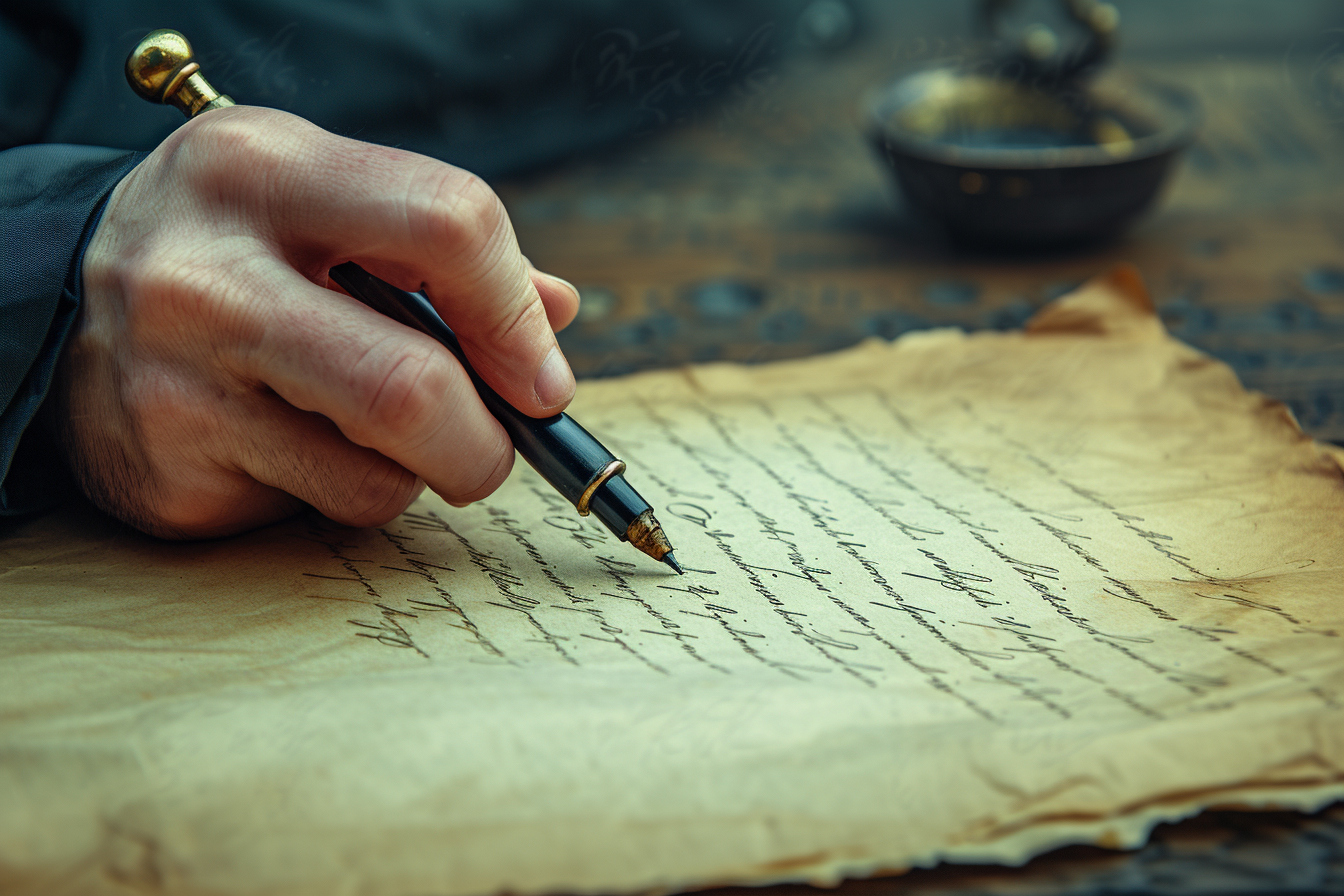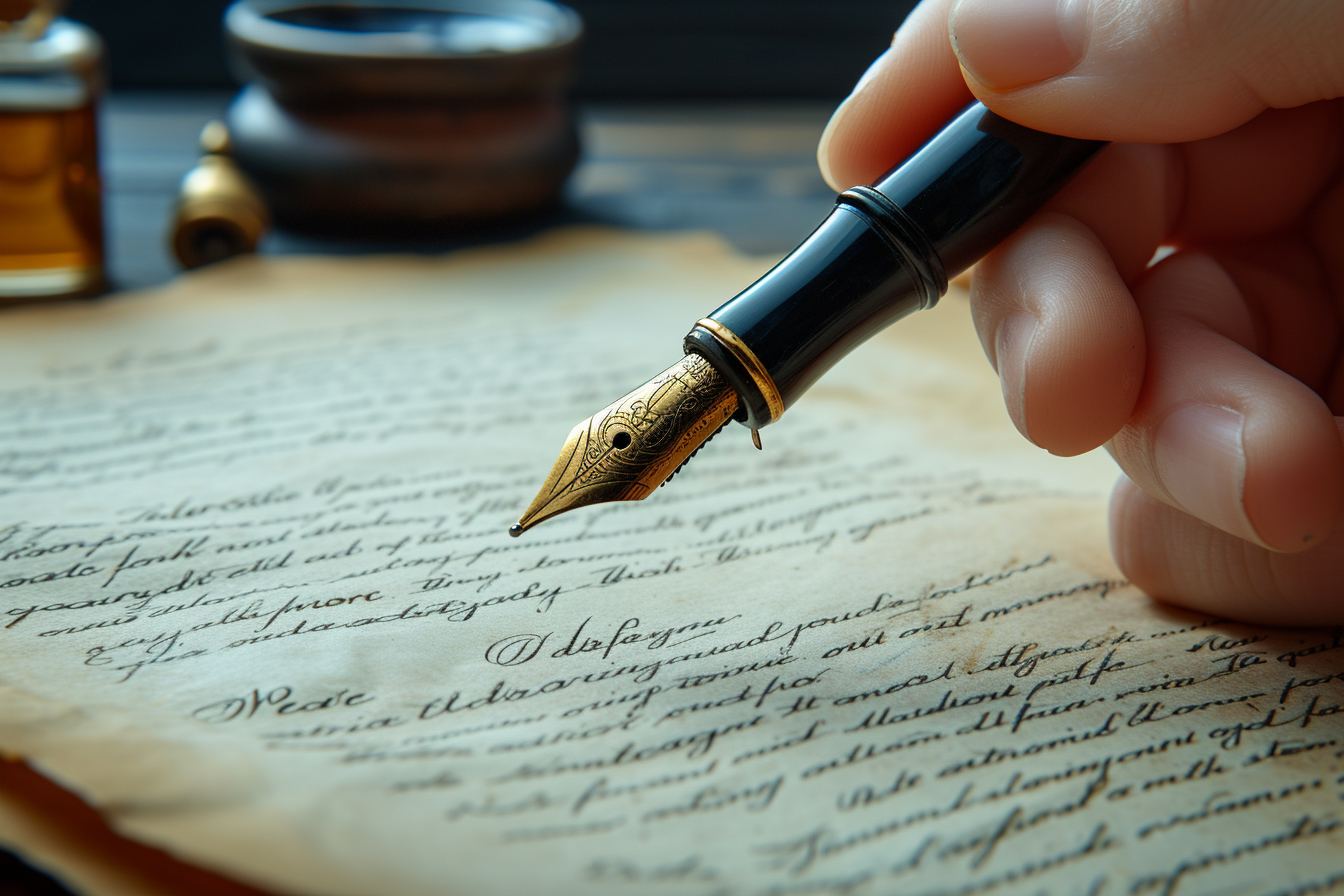Modern calligraphy has emerged as a popular art form, melding the charm of traditional penmanship with a fresh, contemporary style. This visual art not only embellishes written communication but also allows artists and hobbyists to express individuality through each stroke. Mastering modern calligraphy is an enriching endeavor that demands patience, practice, and a few key techniques to create scripts that are as breathtaking as they are individual.
Basic tools for modern calligraphy
Before delving into techniques, it’s crucial to equip oneself with the right tools. Selecting quality materials lays the foundation for producing fine calligraphy.
Calligraphy pens
A variety of pen types are available, from traditional dip pens to modern brush pens. The flexible nib of the dip pen provides great control over line thickness, while brush pens offer a convenient and beginner-friendly alternative with similar results.
Quality ink
Ink plays an essential role in the consistency and flow of your calligraphy. High-quality ink will enable smooth strokes and vibrant, lasting colors. Always opt for inks that are specifically formulated for calligraphy to avoid issues with clogging or uneven distribution.
Proper paper
A smooth, thick paper is necessary to prevent bleeding and feathering of ink. Practice on quality calligraphy paper, and when creating final pieces, choose paper that complements the ink and doesn’t compromise the integrity of your delicate lines.
Fundamental techniques
Understanding pressure and angle
Modern calligraphy is characterized by its contrasting thick downstrokes and thin upstrokes. Achieving this contrast requires mastery over the pressure applied to the pen and the angle at which it is held. Practice creating uniform strokes, applying more pressure during the downward motion and easing up as you move upward.
The basics of letter formation
Developing an understanding of letter structures is vital. Each letter consists of several basic strokes, and learning to create these will significantly improve letter consistency. Alphabet drills, where each letter is broken down into its constituent strokes, can be an excellent way to practice.
Practicing consistency

Consistency is the hallmark of great calligraphy. Uniformity in letter size, spacing, and slant creates a cohesive and elegant script. Use guidelines to practice, ensuring that all the letters align correctly and follow the same angle. Over time, muscle memory will develop, and consistent hand movements will become more intuitive.
Developing a unique style
While mastering consistency, also explore variations in your calligraphy to find a style that resonates with your personal aesthetics. Experiment with different letterforms, flourish styles, and compositions. A unique artistic voice will emerge from blending the foundational rules with your individual preferences.
Refining technique with advanced exercises
Advancing in modern calligraphy requires continuous practice. Engaging in more complex exercises, such as writing out lengthy texts or challenging quotes, pushes skills further. Incorporating various flourishes and design elements also adds sophistication to your calligraphy.
The art of composition
Calligraphy transcends the mere act of writing – it ventures into the realm of design. Understanding composition principles like hierarchy, balance, and white space greatly enhances the overall impact of your calligraphy piece. Practice planning out compositions in pencil before committing to ink to refine your layout and design.
Common pitfalls and how to avoid them
Mistakes are an inevitable part of the learning process, yet becoming aware of common pitfalls can hasten improvement. Here are some to watch out for:
over-flourishing
While flourishes can add a beautiful touch to calligraphy, excessive flourishing can clutter the piece and detract from its legibility. Strive for a balance where flourishes enhance rather than overpower the script.
Ignoring the basics
In pursuit of developing an individual style, don’t overlook the importance of fundamental techniques. Always circle back to basic strokes and proper form to maintain a solid foundation.
Impatience with progress
Calligraphy requires time and patience, and progress may not be immediate. By recognizing that each practice session adds to your ability, you can avoid frustration and stay motivated on your journey to mastery.
Nurturing creativity and inspiration
Enhancing calligraphy skills also involves nurturing your creative spirit. Gathering inspiration from a plethora of sources, such as nature, other script styles, or even digital fonts, can lead to innovative ideas and techniques. Sketching and doodling unrelated to calligraphy can also serve to refresh your creative well.
Joining a calligraphy community
Being part of a community allows you to share your work, get constructive feedback, and gain new insights. Whether online or in person, these communities can offer valuable support and inspiration.
Embracing the digital world
In the age of technology, digital tools can be advantageous for calligraphers. Software programs and apps allow for experimentation with designs without the commitment of ink, making it easier to visualize and edit compositions. Moreover, digitizing your work can open up opportunities to reach a wider audience or apply your calligraphy to various digital projects.
Continuous learning and exploration
The journey towards mastery in modern calligraphy is ongoing, marked by constant learning and exploration. Workshops, online tutorials, and books can provide new techniques and perspectives to refine your skills. As the world of calligraphy continues to evolve, staying curious and open to new ideas will keep your passion for this beautiful art form alive.
In creating elegant script through modern calligraphy, every artist embarks on a personal journey. It is a blending of patience, practice, and creativity that results in not just a mastery of technique, but also the development of an expressive, individual artistic voice. By following these essential tips and committing to the art, both novices and experienced calligraphers can elevate their craft to new heights.


Leave a Reply